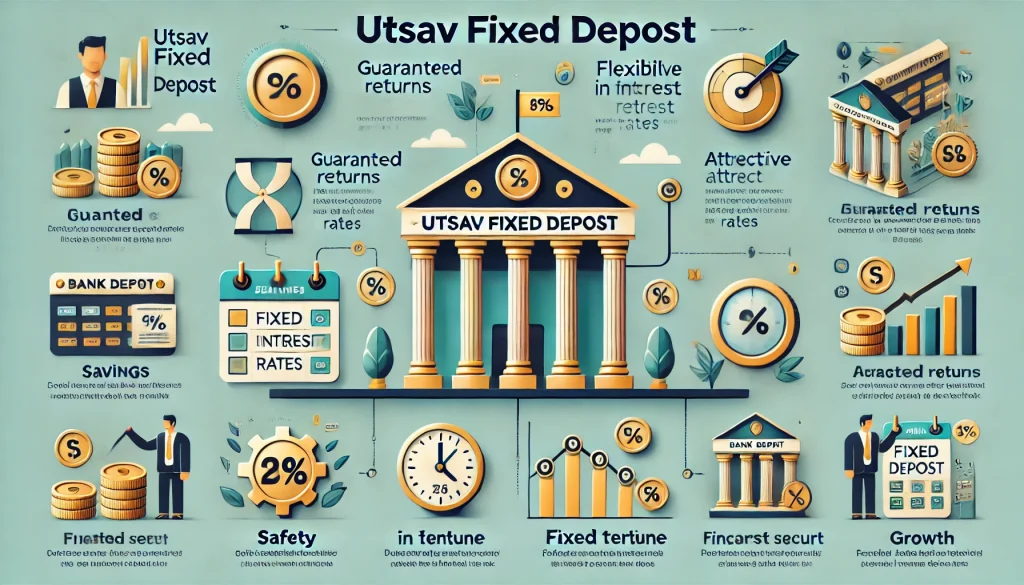
In today’s financial landscape, it is in your best interest to manage your finances in a way where you can achieve the highest possible return while ensuring liquidity whenever due. Investment in a sweep-in FD is an ideal way to do so. This blog will provide insights into the sweep-in FD concept and all the relevant details you need to know in 2023.
Sweep-in FD Means
A sweep-in FD is an automated facility offered to regular FD account holders that allows them to link their FD account with their savings or current account. It can also be considered a special feature of a fixed deposit scheme through which the funds deposited in a savings/current account can earn the high-yielding interest rates of an FD.
What are the Features of a Fixed Deposit Sweep-in?
Get your start in sweep-in FD investments by going through some of its salient features.
- Account Linking – One of the most common features of a Sweep-in FD is that such an FD account has to be linked with a depositor’s savings/current account. Moreover, depositors need to open and link their savings/current account in the same bank from where they will avail of this FD facility.
- Rate of Interest – The sweep-in FD interest rate will be applicable as per the prevailing interest rate of a regular FD account. Under a sweep-in FD account, a depositor can invest surplus funds and generate higher returns on them than a savings account.
- Tenure – The tenure of a sweep-in FD varies, depending upon the terms and conditions of different banks and financial institutions. However, it generally ranges between one year to 5 years. Depositors availing sweep-in facilities can choose a suitable tenure from the existing range, as per financial requirements.
- Eligibility Criteria – A fixed deposit sweep-in account is only applicable to existing FD account holders who can maintain a certain balance as specified by the bank.
- Easy Withdrawals – A sweep-in FD allows depositors/investors to easily withdraw the surplus funds from a savings/current account while maintaining the remaining FD balance. Moreover, such a type of FD does not impose any withdrawal penalty or fees upon depositors.
How Does the Sweep-in Facility Work?
A fixed deposit account with a sweep-in facility works on the concept of transferring surplus funds to an FD account from a savings/current account. It functions on the basis of a predetermined threshold set by a depositor/investor, allowing them to avail high-yielding interest rates.
Let’s understand how the sweep-in FD facility works with the help of an example. Suppose that you want to avail a sweep-in facility along with your regular FD, and you have set an account limit of ₹45,000.
Let’s consider that you already have a minimum balance of ₹25,000 in your bank account and want to deposit an amount of ₹60,000. In this case, the bank will transfer the excess amount of ₹40,000 to your sweep-in FD, allowing you to easily withdraw this amount without involving any additional charge or penalty.
What are the Advantages of Sweep-in Fixed Deposit?
Here is a list of some common advantages you can avail of by investing in a sweep-in fixed deposit scheme.
- While sweep-in FD offers higher interest rates than a savings/current account, it also allows depositors to withdraw or sweep funds from the account without losing any interest income.
- Sweep-in FD is a better alternative to overdraft/loan against FD facility, enabling depositors to manage their financial emergencies. Unlike an overdraft facility, this feature of an FD does not involve any additional cost.
- By applying once, depositors can avail this facility for more than one FD account and link them all together to ensure higher liquidity.
- Most banks in India provide additional benefits to depositors, such as flexibility to choose a suitable tenure and maturity of the sweep-in FD account.
How Can You Avail the Sweep-in FD Facility?
There are two ways, online and offline, through which an individual can avail the sweep-in FD facility, as per their convenience and suitability.
1. Online
Here is a step-by-step guide on how to avail sweep-in facility online from a choice of your bank.
- Step 1: Log in to the net banking portal of your preferred bank.
- Step 2: Find the ‘FD Sweep-in’ option under the Fixed Deposit tab and click on it.
- Step 3: Enter the savings account number and the fixed deposit number that you want to link.
- Step 4: Verify all the details carefully and click on the ‘Continue’ tab to activate the sweep-in facility in your fixed deposit account.
2. Offline
Below is a stepwise process for applying for a sweep-in facility for your FD investment offline.
- Step 1: Visit the nearest branch of your preferred bank.
- Step 2: Ask a bank representative to link your FD with your savings/current account.
- Step 3: Submit the required details, such as your savings or current account number, FD account number and your particulars.
- Step 4: Specify a bank account limit for your sweep-in FD.
- Step 5: Select a suitable term for your sweep-in FD.
What is the Difference Between Sweep-in FD & Flexi FD?
Let’s understand how sweep-in FD and flexi FD differ from each other.
| Criteria | Sweep-in FD | Flexi FD |
|---|---|---|
| Definition | No fixed tenure, depositors can choose any tenure as per their requirements | Flexi FD is a type of fixed deposit scheme in itself, like a regular FD but with specific features |
| Tenure | Ranging between a year to 5 years | Flexi FD is a type of fixed deposit scheme in itself, like a regular FD but with specific features |
| Multiple Account Linking | A single bank account can be linked with multiple FD | A single bank account can only be linked to one Flexi FD at a time |
| Eligibility Criteria | Only FD account holders are eligible | All Indian residents are eligible |
What is the Eligibility Criteria for Fixed Deposit Sweep-in?
An individual needs to satisfy some criteria first to avail the benefits of a fixed deposit sweep-in facility. Let’s take a look at the eligibility criteria of such FD.
- An individual has to deposit a minimum amount of ₹25,000 in a regular FD account.
- A minimum balance ranging between ₹25,000 to ₹1.00.000 has to be maintained by an individual in a premium fixed deposit account.
Auto Sweep Facility Banks List
Here is a list of some of the major banks in India that provide auto sweep-in facilities.
| Bank | Flexi Deposit |
|---|---|
| Bank of India | Current Deposit Plus Scheme |
| ICICI Bank | Money Multiplier Fixed Deposit Scheme |
| AXIS Bank | Auto Fixed Deposit Scheme |
| Union Bank of India | Savings Flexi Deposit Scheme |
| State Bank of India | SBI Multi Option Deposit Scheme |
Conclusion
You must opt for a sweep-in FD if you have idle cash reserve in your savings or current account. A Sweep-in FD is an ideal way to manage your funds and earn significant returns. Hopefully, now you clearly understand this FD facility and can avail it easily at your convenience. However, carefully review all the terms and conditions associated with this facility and make an informed decision.
FAQs
No, a depositor cannot link their fixed deposit account with more than two bank accounts under the Sweep-in FD. They can only choose either a savings account or a current account to avail this facility.
No, a depositor/investor cannot avail sweep-in facility for both the principal amount and the amount of interest income earned from an FD investment. Such a facility is only applicable to the principal amount
Yes, existing customers are eligible to avail the sweep-in facility. A Sweep-in FD is also applicable to new customers. However, all customers need to open an FD account first and satisfy the eligibility criteria in order to avail this feature.
No, a Sweep-in FD is not eligible for tax exemption as per Section 80C of the Income Tax Act, 1961. The interest income earned from such type of FD is subject to taxation, as per the applicable income tax slab rate.
Most banks and financial institutions in India do not have a fixed investment threshold for a Sweep-in FD. However, the transfer of surplus funds from savings/current account to FD account is generally made in multiples ranging from ₹1 to ₹1,000.
Disclaimer
This article is solely for educational purposes. Stable Money doesn't take any responsibility for the information or claims made in the blog.


